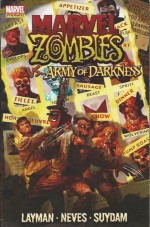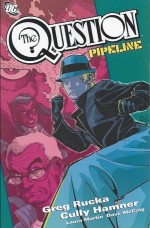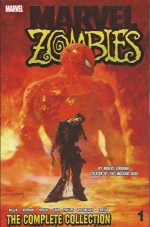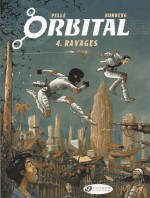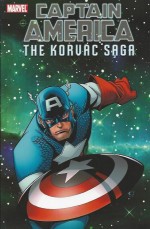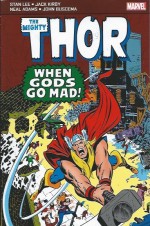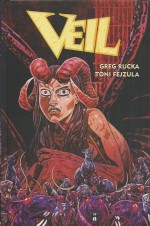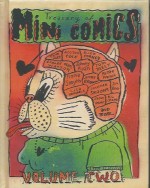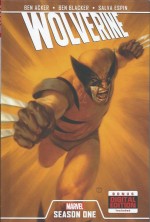

By Kou Yaginuma (Vertical)
ISBN: 978-1-935654-03-2
This beguilingly intimate paean to the unyielding allure of the stars came out of Kou Yaginuma’s poignant vignette ‘2015 Nen no Uchiage Hanabi’ (‘2015: Fireworks’), published in Gekkan Comic Flapper magazine in June 2000.
Subsequently expanded and enhanced, the themes and characters grew into a spellbinding coming-of-age epic which wedded hard science and humanist fiction with lyrical mysticism wrapped up in traditional tales of school-days friendships and growing up.
Small, unassuming Asumi Kamogawa has always dreamed of going into space. From her earliest moments the lonely child gazed with intense longing up at the stars, her constant companion and confidante an imaginary friend dubbed Mr. Lion.
When Asumi was a year old, the first Japanese space launch had ended in catastrophe after rocket-ship ShishigÅ (“The Lionâ€) exploded: crashing back to earth on the city of Yuigahama where the Kamogawas lived. Hundreds were killed and many more injured.
Among the cruellest casualties was Asumi’s own mother. Maimed and comatose, the matron took years to die and the long, drawn-out tragedy deeply traumatised her tiny, uncomprehending daughter. The shock also crushed her grieving husband who had worked as a designer on the rockets for Japan’s fledgling Space Program.
In the wake of the disaster, Tomoro Kamogawa was assigned by the corporation who had built the ship to head the reparations committee. Guilt-wracked and personally bereaved, the devastated technologist visited and formally apologised to each and every survivor or victim’s grieving family. The experience harrowed and crushed him.
He is certainly no fan of the space program now; having lost his wife, his beloved engineering career and his pride to the race for the heavens. He raised his daughter alone, working two – and often three – menial jobs at a time for over a decade and cannot countenance losing the very last of his loved ones to the cold black heavens…
In response to the Lion disaster, Japan set up an Astronautics and Space Sciences Academy. After years of passionate struggle and in defiance of her father’s wishes, in 2024 Asumi – an isolated, solitary, serious but determined teenager – was accepted to the Tokyo National Space School. Without her father’s blessing, she reluctantly left Yuigahama and joined the new class.
Amongst the year’s fresh intake were surly, abrasive Shinnosuke Fuchuya (an elementary school classmate who used to bully her as a child back in Yuigahama), jolly Kei Oumi, chilly Marika Ukita and spooky, ultra-cool style-icon and fashion victim Shu Suzuki who all gradually became the shy introvert’s closest acquaintances.
Every day Asumi closed inexorably upon her stellar goal. Ever since the crashing rocket had shattered her family, she had drawn comfort from the firmament, with Mr. Lion staring up at the heavens by her side; both especially drawn to the twinkling glow of Virgo and the alluring binary star Spica.
And now she was so tantalisingly close…
Small, poor, physically weak but resolutely capable, Asumi endures and triumphs over every obstacle and she still talks with Mr. Lion – who is very probably the ghost of a ShishigÅ crewman…
All any student at the Academy can think of is going to space, but they are harshly and constantly reminded that most of them won’t even finish their schooling. At just four feet, eight inches tall Asumi constantly struggles to meet the arduous physical requirements but has already survived far greater problems. She is still adjusting to the busy life of Tokyo, sleeps in tawdry communal women’s dorm “The Seagullâ€, struggles with many of her classes and subsists on meagre funds, supplemented by part-time jobs…
Individual stories are divided into “Missions†with volume six covering numbers 25-29, and also including a mesmerising sidebar tale of Asumi’s childhood as well as another entrancing autobiographical vignette from the author’s own teenage years.
‘Mission: 25’ begins with standoffish Ukita in big trouble in the deep woods. Asumi’s entire class are enduring a brutal survival exercise in the wilds but the former rich girl – who has recently escaped her overbearing father’s domination – also suffers from some secret mystery malady. Moreover she has recently decided to go off her meds.
Now she is weak and bleeding, lost where no one can help her…
As the carefully monitoring teachers move in to save Ukita, Asumi reaches her classmates at the designated target zone. They are astounded to find that she has made her way to them without the compass they all had in their survival kits…
With only Ukita a no-show, Asumi abandons her own position of safety to go back into the woods and search for her, unaware that the object of her concern is slowly recovering at the teachers’ monitoring post.
As previously seen in a sequence of flashbacks, the enigmatic girl has an ancient and unexplained connection to the boy who became Mr. Lion…
Long ago in Yuigahama, a lad obsessed with rockets met a frail and sickly rich girl, stuck in isolation in a big house. Her name was Marika Ukita and they became friends despite her condition and the constant angry intervention of her father.
She was beguiled by his tales of space flight and the history of exploration, and shared the only joyous moment in her tragic life, when her over-protective dad took her to see a play called Beauty and the Beast…
During the big annual Fireworks Festival the boy made a lion-mask of the Beast to wear, but she never came. He had to break into the mansion to show her. She was very sick but wanted to dance with him…
Later the dying daughter had quietly rebelled when told she was being packed off to a Swiss sanatorium. She slipped out of the house when no-one was watching and vanished. The boy knew where she had gone and rushed off to save her…
In the Now as slowly recovering Cadet Ukita see her classmates all head back into danger for her, she experiences awful memories: visions of a man wealthy enough to replace a lost daughter through money and science but not show her any love. Furious yet inexplicably delighted, Ukita begins to realise that she has friends who will risk everything for her…
‘Mission: 26’ finds the exhausted little astronaut-to-be back home safely at the Seagull hostel, blithely unaware that romantically interested party Kiriu and his fellow orphan Akane have been missing their Asumi.
Instead she is busy teaching Ukita – still plagued with memories of her father’s draconian efforts to keep her healthy but never caring if she was happy – how to be sociable. Soon they realise how much they share in respect to love of the stars…
Asumi’s joy soon dissipates when she learns of Kiriu’s latest crisis and that little sister Akane has been hospitalised with sunstroke. The determined tyke was sitting outside waiting for her astronaut friend to visit…
Returning to the orphanage that night Kiriu is astounded to find Asumi there, and even more astonished when she invites him to come see the stars with her…
‘Mission: 27’ offers more insight into Mr. Lion’s past as a special guest lecturer visits the Space School. Astronaut Ryohei Haijima is a god to the star-struck kids but he seems almost apologetic and embarrassed to be there, with no pride in his achievements.
Mr. Lion knows his story. As boys they were at school together and worked on rocketry projects that gave them both ineffable pleasure. They both became astronauts, and if Haijima hadn’t artfully relinquished his position to the desperately eager Lion, he would have died in the ShishigÅ disaster.
On hearing this, Asumi decides to reintroduce the despondent victim of Survivor’s Guilt to his boyhood friend…
Focus shifts to ultra-cool Shu Suzuki with ‘Mission: 28’ as the laconic rich kid goes missing for a week whilst his classmates suffer the next devilish practical course devised by their tutors to separate potential space explorers from ordinary mortals. Concerned, they all begin searching for him and learn an extraordinary story.
Suzuki too has problems with parents. As the first son of a wealthy business and political dynasty he was groomed from birth to inherit the mantles of duty and government, but when he refused and chose the stars he was disowned. As his friends converge on the lost boy he invites them all to sit with him and fold origami stars, wryly revealing he’s been working for the past week to pay for his tuition…
The ongoing saga pauses here after ‘Mission: 28’ finds the class practising in a space shuttle trainer. As usual the tests are rigged, unfair and a complete surprise but as she bitterly complains – as always – Oumi realises that a strange calmness and complacency has become Ukita’s new emotional state.
Stressed to their limits the students look forward to the imminent summer vacation and when Oumi stridently suggests they all head for the beach together, Fuchuya states he has to go home. Undaunted, Oumi points out that Yuigahama is a seaside town – and must have a beach – whilst Asumi reminds them that the town’s annual Fireworks Festival is forthcoming…
With the holiday plans a fait accompli, the kids separate and Ukita finds the irrepressible Suzuki moving his meagre belongings into the library. Soon all of them are helping him kit out the attic he intends to squat in, astounded at the beautiful book-crammed annexe, filled floor to ceiling with tomes about space…
And then it’s time for the holidays and Asumi heads back to Yuigahama, looking forward to the Festival and seeing Fuchuya’s wonderful grandfather again. She’s going to be very disappointed…
To Be Continued…
Although the main event goes into a holding pattern here, further insights into Asumi’s childhood are forthcoming as ‘Tiny, Tiny Aqua Star’ reveals how the little outcast was ostracised and bullied by her fellows for claiming she had an astronaut lion ghost for a friend. The unflaggingly honest waif never knew her shy classmate Shinnosuke Fuchuya was quietly keeping the worst of the class’s abuse away from her…
Life was still pretty unpleasant, however, but took a sweet upturn when old Mr. Fuchuya (the lad’s granddad) gave her one of his handmade sparklers to light at the Fireworks Festival.
More disturbing was the urgent and savage demand of one of her tormentors. Following the death of her mother, Yuzo wanted Asumi to show her the place where you see ghosts, even if it cost both their lives…
The manga miracles then conclude with ‘Another Spica’ which sees author Yaginuma in autobiographical mode once more, harking back to his ambition-free teens, chopping pineapples in his crappy job and enduring the self-castigating hell of a first date…
These unforgettable tales originally appeared in 2004 as Futatsu no Supika 6 in Seinen manga magazine Gekkan Comic Flapper, aimed at male readers aged 18-30, but this ongoing, unfolding saga is perfect for any older kid with stars in their eyes…
Twin Spica filled sixteen collected volumes from September 2001 to August 2009, tracing the trajectories of Asumi and friends from callow students to accomplished astronauts and has spawned both anime and live action TV series.
This sublime serial has everything: plenty of hard science to back up the informed extrapolation, an engaging cast, mystery, frustrated passion, alienation, angst, enduring friendships and just the right blend of spiritual engagement with wild-eyed wonder; all welded seamlessly into an evocative, addictive drama.
Rekindling the magical spark of the Wild Black Yonder for a new generation, this is a treat no imagineer with head firmly in the clouds can afford to miss…
© 2011 by Kou Yaginuma. Translation © 2011 Vertical, Inc. All rights reserved.
This book is printed in the Japanese right to left, back to front format.

